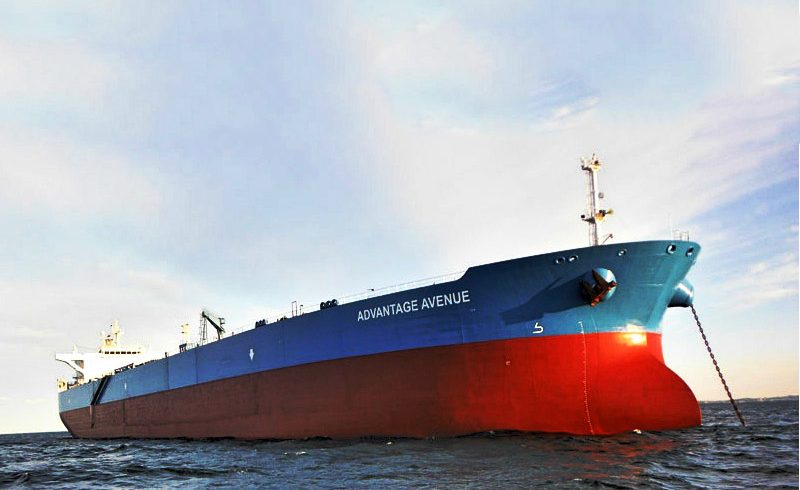(Bloomberg) — Over nearly 45 years, the oil tanks at Milford Haven on the U.K. west coast have stored dozens of crude varieties: from North Sea Brent to Nigeria’s Bonny Light and almost everything in between. Now, for the first time, they are holding U.S. crude too.
Trafigura Group Pte. is using Milford Haven, which can hold about 9 million barrels of crude and refined products in its 54 tanks, as a back-stop in a supply chain stretching about 8,000 kilometers (5,000 miles) from the oil ports of Texas to the refineries in north-west Europe, including the Rotterdam trading hub.
Since Washington lifted a 40-year-old ban on U.S. crude overseas sales in late 2015, Trafigura has been sending tankers across the Atlantic. Its recent pace of two to three 700,000-barrel-capacity Aframax tankers a month makes the trader one of the top exporters alongside BP Plc.
"It’s a growing business for Trafigura," Ben Luckock, the company’s global head of crude-oil trading, said in an interview at the terminal in southwest Wales. "We are in further discussions with a number of refiners for more U.S. crude."
Atlantic Crossing
The Advantage Avenue was the latest Aframax to make the Atlantic crossing, arriving in Milford Haven on July 8 with about 750,000 barrels of Eagle Ford shale oil loaded in Corpus Christi, Texas, according to ship-tracking data compiled by Bloomberg. Another vessel, the Daytona, is taking the same grade of crude to Rotterdam, said a person familiar with the matter, who asked not be be named because details of the shipment aren’t public.
Trafigura spokeswoman Victoria Dix declined to comment.
Its journey is only possible because the shale boom reversed decades of decline in American oil output. The U.S. imposed a ban on most crude exports after the 1973 to 1974 oil embargo by Arab members of the Organization of Petroleum Exporting Countries stoked fears about the nation’s growing dependence on imports. Those concerns have eased as a new generation of drillers used hydraulic fracturing to blast apart shale rocks, lifting the nation’s output to a 30-year high in June 2015.
Although output has dropped 12% in the past year as the industry was hit by the global price slump, U.S. exports rose to a record 660,000 barrels a day in May. Crude is flowing into Canada, China, Curacao, France, the Netherlands and the U.K., according to data from U.S. Census and the Energy Information Administration.
In addition to Trafigura, other independent traders such as Vitol Group BV and Gunvor Group Ltd. have exported U.S. crude. Gunvor used a similar technique to Trafigura for the export, relying on a terminal in Panama it co-owns as a back-stop for the shipment.
Milford Haven
The Milford Haven site started life as an Amoco refinery in the 1970s, receiving shipments of crude and selling refined fuels into the local market. Puma Energy BV, in which Trafigura owns a 49% stake, purchased the facility a year ago, shut down the crude-processing plant and transformed it into a storage terminal. Trafigura also has a Mediterranean hub — nearly 6 million barrels of crude-storage capacity under long-term lease in tank farms operated by the Eilat Ashkelon Pipeline Co. Ltd in Israel.
The terminals allow cargoes to make a temporary stop if Trafigura doesn’t immediately have a buyer. When future prices are higher than current levels — a structure called contango — a brief period of storage can even boost profits because the final value of the sale increases. The facilities also allow the trader to blend high-quality U.S. oil with other grades, tailoring the crude to meet the exact needs of refiners, or split cargoes into smaller batches.
Cheaper Pipelines
Trafigura is benefiting from two trends to build its U.S. crude-export business. First, pipeline and railway fees to move oil from fields in Texas and Oklahoma to the ports of the U.S. Gulf of Mexico have become cheaper as U.S. production fell following the global price slump. The second is the discount of U.S. crude futures to international prices, which allows traders to make a profit moving oil from one shore of the Atlantic to the other.
"The level that seems to open the U.S.-to-Europe export arbitrage is about $1 a barrel between Brent and West Texas Intermediate,” Luckock said.
Brent futures for September delivery traded 65 cents a barrel above the same contract for West Texas Intermediate at 12:19 p.m. Monday on the London-based ICE Futures Europe exchange. The price difference, which reached a peak of $27.81 a barrel in late 2011, has narrowed as U.S. production declines. While the WTI discount has averaged 73 cents this year, it was wider than $1 for much of February and April.
The shipments from the U.S., together with an alliance with Russian state-owned Rosneft, have helped Trafigura to become the world’s second-largest independent oil trader, handling 4 million barrels a day of crude and refined products.
Bloomberg News by Javier Blas




